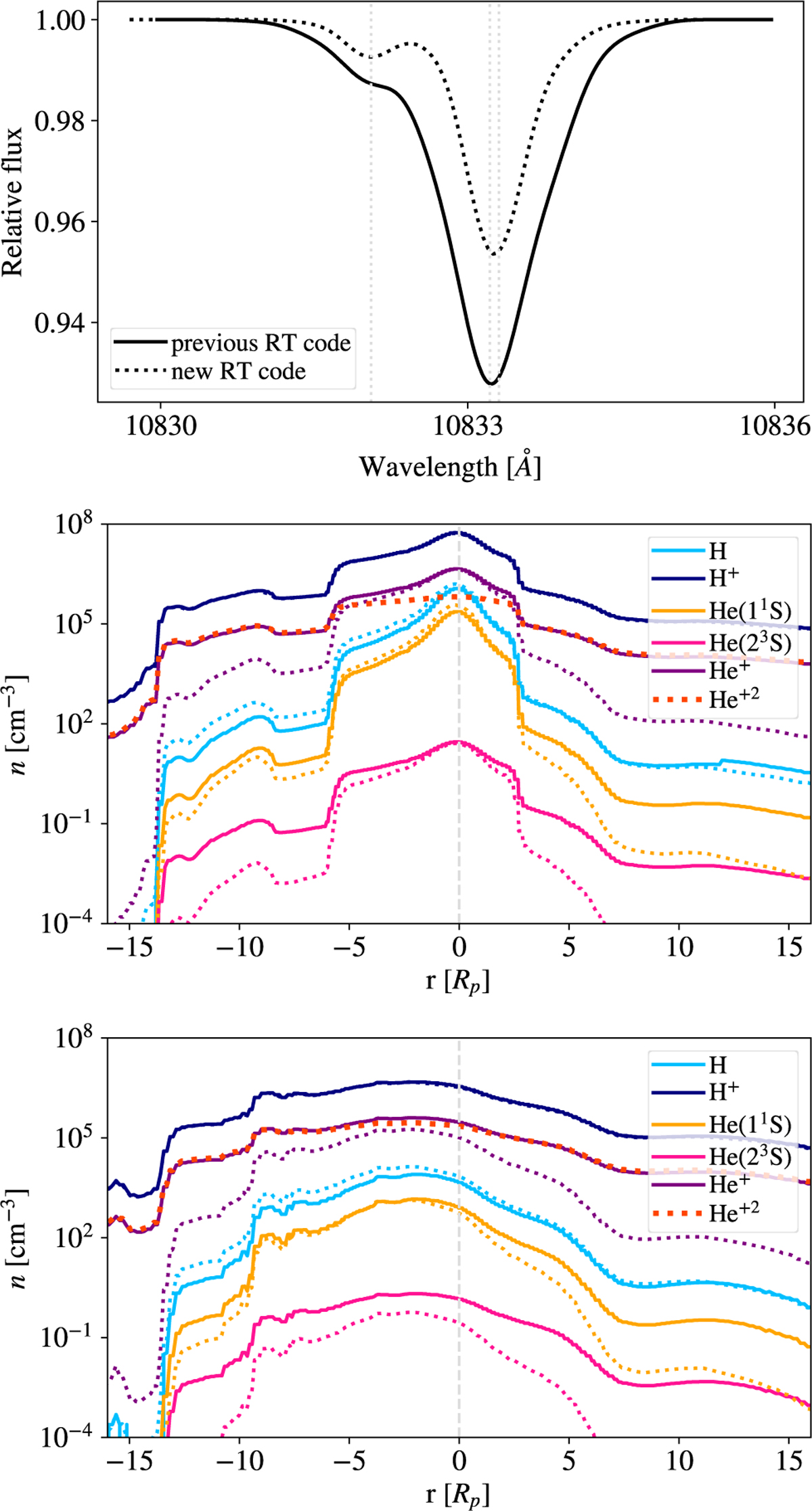Fig. C.1

Download original image
Comparison of the helium spectrum (top) and the number densities of hydrogen and helium species (middle and bottom) between the previous and new radiative transfer (RT) methods for the TORUS model. Dotted profiles show results from the new RT code used in this study, which includes Cloudy, while solid lines represent the earlier code developed by MacLeod & Oklopčić (2022), based on the radiative transfer formalism introduced in Oklopčić & Hirata (2018). Light gray vertical dotted lines mark the nominal wavelengths of the He I 10 833 Å triplet. The middle panel shows a ray crossing near the planet YZ(0.16|0.02)R*, while the bottom panel shows a more distant ray YZ(0.86| − 0.28)R*, both in a mid-transit configuration (φ = 0). The previous code lacks He2+ formation, which becomes significant in low-density regimes, reducing He+ available for recombination into the metastable He(23S) state that forms the observed spectral lines.
Current usage metrics show cumulative count of Article Views (full-text article views including HTML views, PDF and ePub downloads, according to the available data) and Abstracts Views on Vision4Press platform.
Data correspond to usage on the plateform after 2015. The current usage metrics is available 48-96 hours after online publication and is updated daily on week days.
Initial download of the metrics may take a while.


